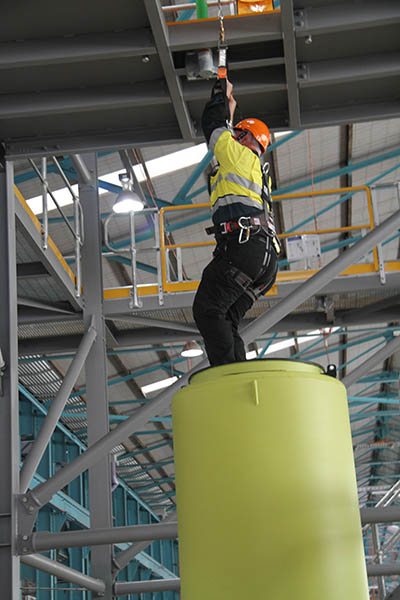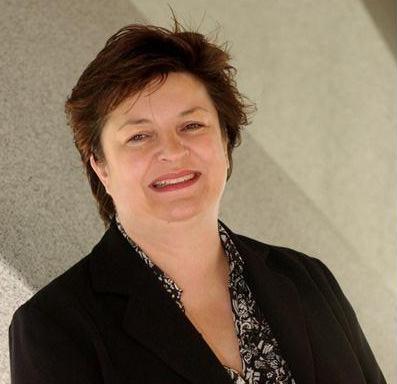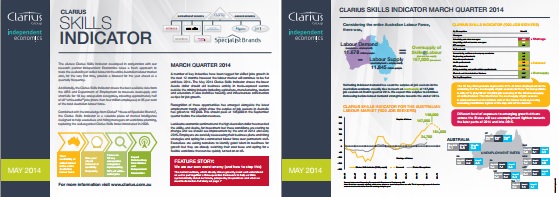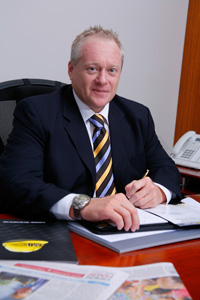Construction Training Centre launches ‘hot leasing’ for RTOs
AN INNOVATIVE ‘hot leasing’ facility for registered training organisations (RTOs) has been launched at Salisbury in Brisbane’s south, to help drive new training programs for the trades.
Education, Training and Employment Minister John-Paul Langbroek officially opened the facility on last month, urging RTOs to take advantage of a golden opportunity to develop and run modern training courses without huge capital outlay. The fully equipped facilities can be leased is cost-effective time packages – ranging from hourly to monthly.
The Construction Training Centre developed the concept of what it calls Hot Leasing based on the success and innovation of collaborative consumption, also called the share economy. 
The rental section of the share economy is big business, an industry worth an estimated $26 billion worldwide, said Construction Training Centre CEO Phil Diver.
“The growth and success of the share economy motivated us to see how we could implement it within our own industry,” Mr Diver said.
“Our goal with Hot Leasing is to use the share economy concept to assist RTOs in reducing costs, and also reducing our environmental impact.
“The Hot Leasing facility is a very flexible concept. RTOs are able to book daily, weekly, monthly or even by the hour.
“This flexibility means numerous clients can share the facility, equipment is not left idle, and clients are not paying for space when it is not being used.”
The Construction Training Centre worked alongside industry leaders that will be using the facility to ensure it has the highest industry standards and the latest equipment. The commitment to these standards is already paying off, Mr Diver said, with some parts of the facility complete and clients already enjoying the benefits.
AlertForce Pty Ltd CEO Brendan Torazzi, said, “We have found the crew at CTC Hot Leasing easy to work with. The centre provides world-class simulated work environments for our asbestos removal training.”
Hot Leasing offers a broad range of short term hire access to fully equipped facilities, for industrial safety training and High Risk Work Licence (HRWL) training, assessment and Verification of Competency.
The completed facility will provide state-of-the-art training equipment for asbestos removal, forklift operation, scaffolding, rigging, dogging, swing stage, lifting (cranes), elevated work platform, and scissor lifts.
ends
POSTED May 19, 2014.

 How to resolve AdBlock issue?
How to resolve AdBlock issue? 


 AUSTRALIAN Industry Minister, Ian Macfarlane chaired the inaugural meeting of the Council of Australian Governments (COAG) Industry and Skills Council in Brisbane on April 3, attended by state and territory ministers.
AUSTRALIAN Industry Minister, Ian Macfarlane chaired the inaugural meeting of the Council of Australian Governments (COAG) Industry and Skills Council in Brisbane on April 3, attended by state and territory ministers. CONSTRUCTION Skills Queensland (CSQ), the state’s industry leader for construction training, is changing its engagement model with industry to build what it calls a “cutting edge workforce for the next era in the state’s construction activity”.
CONSTRUCTION Skills Queensland (CSQ), the state’s industry leader for construction training, is changing its engagement model with industry to build what it calls a “cutting edge workforce for the next era in the state’s construction activity”.  BUSINESS leaders Australia-wide are meeting the challenges of tough times through creative pay structures that reward performance and help to retain vital staff.
BUSINESS leaders Australia-wide are meeting the challenges of tough times through creative pay structures that reward performance and help to retain vital staff.